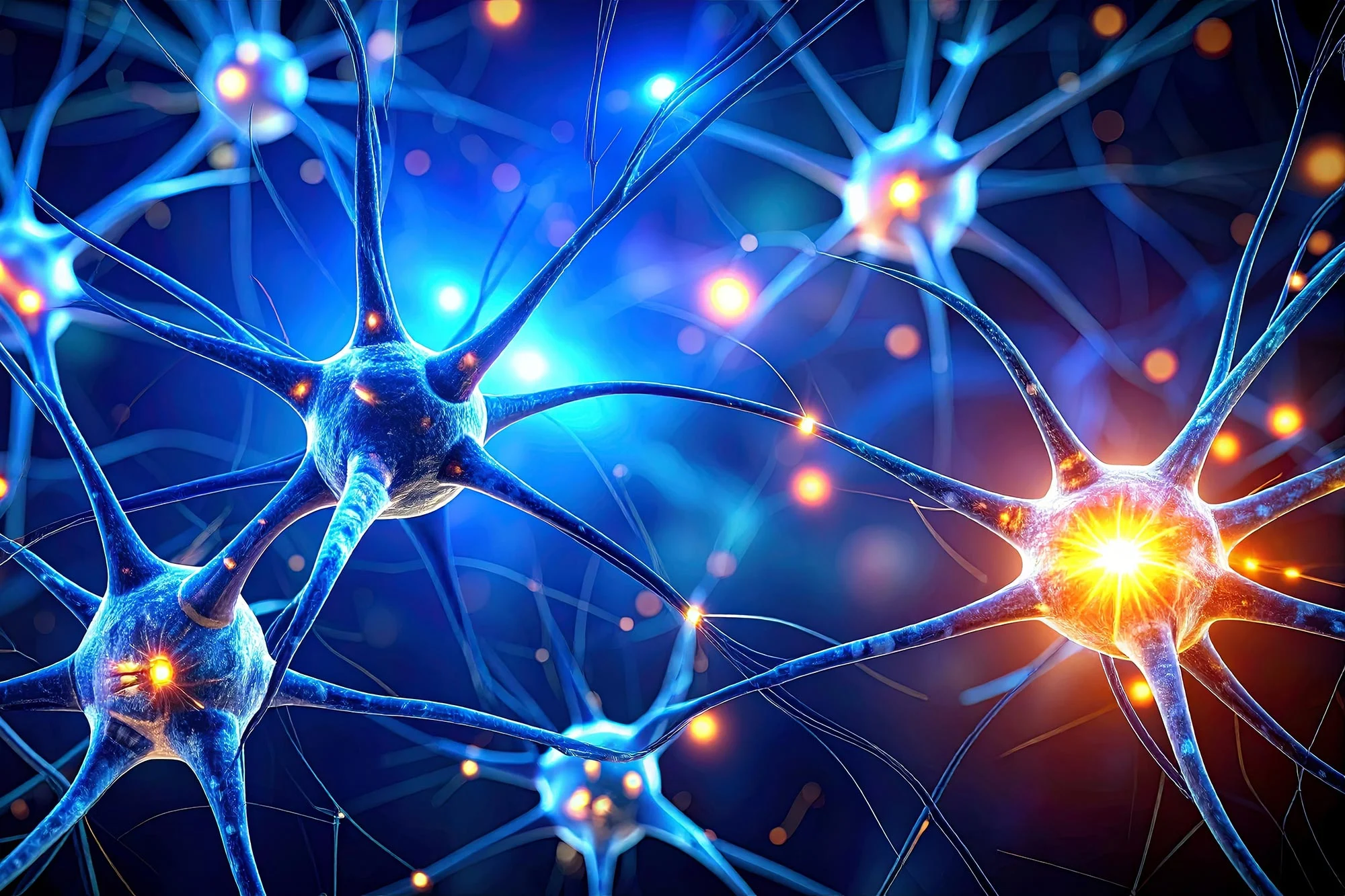Summary of Breakthrough Alzheimer’s Drug Has a Hidden Problem:
A recent study from Osaka Metropolitan University reveals that the Alzheimer’s drug lecanemab effectively removes amyloid plaques but does not improve the brain’s waste-clearing system in the first few months of treatment. The research indicates that significant nerve cell damage and glymphatic system impairment may already be established by the time symptoms arise, complicating the prognosis for recovery.
The study used diffusion tensor imaging to assess changes in the glymphatic system in patients treated with lecanemab, finding no meaningful differences three months post-treatment. This suggests that while lecanemab can reduce amyloid levels and slow cognitive decline, it may not restore lost brain functions, highlighting the multifactorial nature of Alzheimer’s disease and the challenges in treating it effectively. Future research will focus on understanding how various factors influence treatment outcomes.
*****
Summary of Key Points
-
Lecanemab and Amyloid Clearance: The breakthrough drug lecanemab significantly reduces amyloid plaques, a hallmark of Alzheimer’s disease, but has limitations in restoring brain function.
-
Glymphatic System Insight: A recent study reveals that lecanemab does not enhance the brain’s waste-clearing glymphatic system shortly after treatment, suggesting underlying damage prevails.
-
Understanding Alzheimer’s Complexity: The findings illustrate the multifaceted nature of Alzheimer’s, highlighting the need for treatments targeting multiple biological problems concurrently.
- Implications for Future Therapies: While lecanemab shows promise in lowering amyloid levels, its inability to restore lost functionality emphasizes the challenge in treating established cognitive decline.
The Hidden Challenges Behind Breakthrough Alzheimer’s Drugs
In a world where groundbreaking research often brings hope, a recent study regarding the Alzheimer’s drug lecanemab uncovers a hidden problem that can’t be ignored. While the medicine successfully clears amyloid plaques — the toxic proteins contributing to the disease — it leaves a crucial aspect of brain health unaddressed. The implications are profound, prompting a deeper understanding of what it means to treat Alzheimer’s disease effectively.
Breaking Down the Science
Researchers, with a focus on lecanemab, recently unveiled some intriguing findings. Conducted by Osaka Metropolitan University in Japan, the study aimed to unravel how this promising drug affects the glymphatic system — the brain’s waste-clearance network responsible for washing away toxins and metabolic waste. Yes, it’s true; clearing amyloid is significant, but what happens next? The study revealed something unexpected: there weren’t any noticeable improvements in the brain’s waste-clearing system within the first few months of treatment.
This finding brings us face-to-face with a critical point. By the time Alzheimer’s symptoms manifest, substantial damage to nerve cells and the glymphatic system has typically already occurred. The nerve cells are like weary marathon runners who’ve already crossed the finish line before the race begins, leaving little room for recovery in the short term. This illustrates that even when advancements arise, we must approach them with an informed perspective.
The Glymphatic System’s Role in Alzheimer’s
Understanding the glymphatic system is essential. Think of it as a drainage system — a structure that eliminates waste materials from the brain, such as amyloid-beta (Aβ). This system relies on cerebrospinal fluid circulating through the brain, mixing with interstitial fluid to cleanse and purify the intricate neural landscape.
So, what happens when Alzheimer’s enters the picture? As Aβ accumulates, it causes arteries to stiffen. This stiffness hampers the movement of fluids, thus obstructing the waste removal process and triggering myriad adverse changes. The result? The onset of Alzheimer’s symptoms. Here lies a significant conundrum: as patients grapple with the symptoms, the glymphatic system’s impairment has reached critical levels, presenting a formidable challenge in treatment.
Lecanemab and Early Intervention
The results of the recent study underlined an unsettling truth. While lecanemab has been heralded as a revolutionary therapy, its immediate effects on the glymphatic system raise questions about its efficacy in broader neuroprotection or recovery. The research team, led by graduate student Tatsushi Oura and Dr. Hiroyuki Tatekawa, utilized advanced diffusion tensor imaging to obtain images that track changes in the brain over time. Their observations disclosed that, despite reductions in amyloid plaques, the function of the glymphatic system didn’t show improvement within the early months of treatment.
This revelation becomes an opportunity to reflect on a crucial question: In a healthcare landscape increasingly focused on quick solutions, how do we balance the excitement of new drugs with an understanding of their limitations? In this case, while amyloid levels may drop, we must remember that restoring function is a more intricate process than these advances suggest.
The Road Ahead for Alzheimer’s Treatments
So, what does this all mean? As we navigate the complexities of Alzheimer’s disease treatment, it becomes increasingly apparent that a more holistic approach is necessary. Alzheimer’s is not a one-dimensional problem. A myriad of interconnected factors, ranging from genetics to lifestyle, contribute to its progression. Thus, it seems clear: we need solutions that engage multiple biological systems simultaneously.
Dr. Oura succinctly noted, “Even when Aβ is reduced by lecanemab, impairment of the glymphatic system may not recover within the short-term.” This insight connects us to the target of future research. Scientists are urged to delve into other factors, such as age, the disease’s stage, and the extent of white matter lesions, to decipher the relationship between treatment and outcomes.
Indeed, the journey of seeking effective treatments is not trivial. Each step reveals new facets about how our brains operate and how diseases can hijack these processes. By acknowledging the hidden challenges that accompany breakthroughs, we fortify our approach to tackling such diseases and empower those affected to seek comprehensive treatments.
Embracing Resilience and Hope
In the face of these challenges, it’s essential to nurture a sense of resilience and hope. For patients and caregivers navigating the turbulent waters of Alzheimer’s, the journey can often feel like an uphill struggle. Yet, remembering that science continually seeks innovations can provide a beacon of light. Behind every study, every breakthrough, and every clinical trial, there lies a steadfast determination to understand and overcome the complexities of aging and neurodegeneration.
Furthermore, it highlights the importance of expanding our understanding of mental health and brain health in holistic, interconnected terms. Progress might appear slow, yet it’s often the most painstaking efforts that lead to significant breakthroughs. Each layer of understanding achieved illuminates the path for future research and treatments.
Conclusion: The Way Forward
In conclusion, while the developments surrounding lecanemab offer a meaningful step forward in the battle against Alzheimer’s, they also remind us of the delicate and intricate nature of the human brain. As we celebrate advancements in medical science, we must maintain a vigilant and discerning mindset, recognizing that the road to comprehensive solutions requires more than just addressing symptoms; it demands us to tackle the very root of the issues present.
Let’s carry these lessons forward, fostering an environment of curiosity, exploration, and collaboration. By doing so, we remain open to the possibilities that lie ahead, ensuring that each stride taken continues to contribute to understanding Alzheimer’s in all its complexity. More than solutions, what we seek is the promise of a future buoyed by knowledge, resilience, and unity in purpose. In this fight against Alzheimer’s, every piece of understanding is a testament to hope, compassion, and the relentless spirit of human ingenuity.


